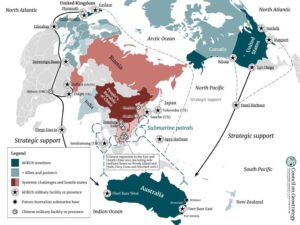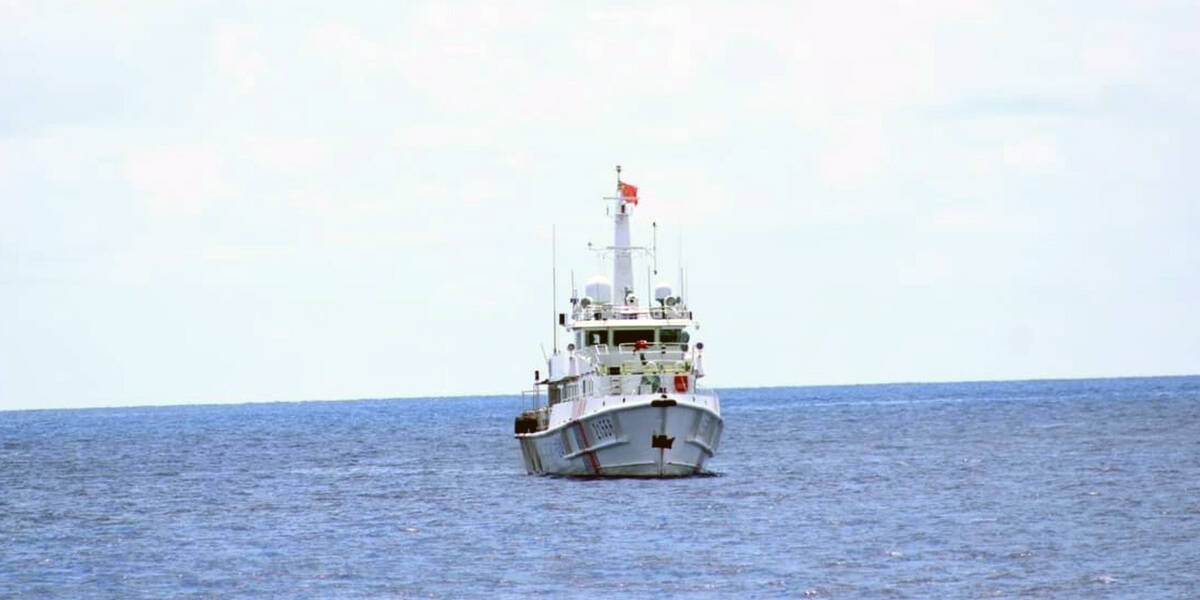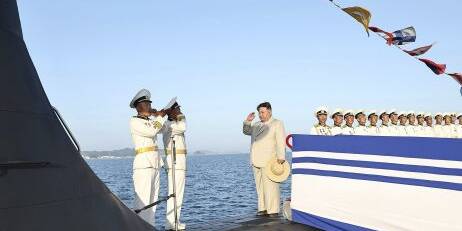John Hemmings, for Pacific Forum
Driven by the CCP’s imperative to oversee “the great rejuvenation of the Chinese nation” by 2049, US intelligence sources indicate that Chinese President Xi Jinping has ordered the PLA to become capable of countering American military power in the Indo-Pacific and ready for a takeover of Taiwan by 2027. This is an alarming prospect lent credence by recent Chinese military exercises around the island nation. According to Adm. John Aquilino, Commander of US Indo-Pacific Command (INDOPACOM), in his March Congressional testimony, the PLA Navy (PLAN) is on track to deliver 440 battle force ships by 2030, including significant increases in aircraft carriers and major surface combatants. As it grows in strength, the PLAN is likely to use its large naval forces to further uphold, even enforce, illegitimate Chinese claims over areas of the East and South China seas, areas through which foreign vessels of all kinds have rights to move under the United Nations Convention on the Law of the Sea (UNCLOS), which the PRC ratified in 1996.
In this worsening geopolitical environment Australia, the United Kingdom and the United States have created the AUKUS submarine and technology-sharing agreement, which has been called a “trilateral, security partnership based on defense capabilities that support [the three countries’] mutual national defense objectives.” According to Mara Karlin, US Assistant Secretary of Defence for Strategy, Plans, and Capabilities, the agreement will “lift all three nations’ submarine industrial bases and undersea capabilities, enhancing deterrence and promoting stability in the Indo-Pacific.”
Deterring indirectly
Before explaining how AUKUS facilitates “direct deterrence” from the perspective of capabilities, capacity, and force posture, it is important to identify forms of “indirect deterrence,” namely by promoting deterrence through a constellation of security alignments and the strengthening of the defense industrial base (DIB). In the case of these latter two forms of “indirect deterrence,” AUKUS—as with the US-Japan-Australia Trilateral and the Quad—is a minilateral. These minilaterals are not strictly alliances, but provide their members with a shared pool of military capabilities or what has also been dubbed a “federated model of defense.” Within the United States, these alignments gel with the administration’s organizing principle of “integrated deterrence,” which was laid out in the 2022 National Security Strategy, the National Defense Strategy, and the Nuclear Posture Review. In addition to accelerating efforts to promote planning, coordination, and operations between various US government agencies and US allies, AUKUS also provides integrated deterrence at the level of the defense industrial base for all three cooperating nations. While it would be a stretch to call this “undersea deterrence,” it would also be remiss not to mention the bolstering effect AUKUS will have on naval shipyards, the nuclear enterprise, and undersea sensor and weapons systems industries, which all contribute to national strength.
Directly deterring from beneath the sea
Defining deterrence as the “building of combat credible forces across all domains and across the full spectrum of conflict to deter aggression,” Karlin also noted that AUKUS is about more than just pillars I and II, but also includes a focus on undersea deterrence throughout the Indo-Pacific across a range of areas. At the simplest level, the agreement adds to undersea deterrence by delivering new advanced warfighting capabilities to its members, particularly Australia: it provides two types of nuclear-powered attack submarine (SSN) platforms—the Virginia class and “AUKUS class”—to replace Australia’s aging Collins class of conventionally powered submarines. While it is a crude measure, more vessels with long-range capabilities, amplified by the advanced weapons capacity and kinetic effects that they can deliver at greater range, more effectively may deter an adversary in the event that it contemplates aggression.

AUKUS thus provides all three countries with a wider distributed force posture closer to likely areas of operations, vis-à-vis the PLAN in the Western Pacific. As shown in Map 1, nuclear-propelled submarines greatly complicate the PRC’s calculus. They can be sent north of Australia to stalking grounds surrounding the South and East China seas, which are critical to Chinese maritime communication lines across the Pacific and to the Middle East and East Africa. By making these routes more vulnerable to interdiction, AUKUS forces the PLAN into a more defensive posture, which may direct resources away from large warships and logistics vessels designed for expeditionary operations.
It does this through the 2-part pathway framework agreed upon in March 2023. The first part of the pathway consists of increased port visits by US and UK SSNs from 2023, which adds to the ability of INDOPACOM and the Royal Navy to regularly position forces east of the Strait of Malacca and west of the International Date Line (IDL)—a helpful softening of the tyranny of distance confronting US and UK naval forces. The second part of the framework includes a rotational element in Australia under the Submarine Rotational Force West intended to begin by 2027. According to the Australian Department of Defence, this will be composed of “a rotational presence…of one UK and up to four US, nuclear-powered submarines” at Fleet Base West. This is likely to draw In Astute- and Virginia-class submarines. Again, this adds to a joint and combined campaign, allowing the three allies to synchronize joint capabilities through increased exercises and further cementing persistent forces in between the Strait of Malacca and the IDL.
Forms of deterrence provided by AUKUS
AUKUS, therefore, provides deterrence at multiple levels. The first two are forms of “indirect deterrence,” or factors which strengthen general deterrence at the state level.
- AUKUS provides a signal of intent—through that of political alignment—potentially muddying the calculations of a potential aggressor. This is AUKUS as a minilateral grouping, and as architecture rather than as a defense industrial deal.
- AUKUS provides indirect deterrence by adding to national strength by adding to the DIB of each member by providing opportunities for industrial cooperation and production. It releases national resources towards shipping industries that may have previously been in decline.
AUKUS has several effects in terms of direct deterrence, too. It is helpful to use the four-point “Seize the Initiative” INDOPACOM approach to divide them:
- In its simplest and most direct form, AUKUS contributes to undersea deterrence by providing its members, notably Australia, with new advanced warfighting platforms (the SSNs and their systems).
- That these are superior systems, with longer ranges provided by their nuclear propulsion, adds to their impact on potential adversaries’ logistics and planning. As submarines can hide underwater, they are an asymmetrical weapons system, designed to threaten sea lanes and surface shipping, both commercial and military.
- Then there are the agreements made in March of this year, such as the two-part pathway that allows for a second direct form of undersea deterrence: that of providing those platforms in a distributed posture across the region. Whether through port visits or a more sustained presence through Submarine Rotational Force West, AUKUS brings more allied forces into the Western Pacific.
- Then, finally, there is the deterrent effect produced by Submarine Rotational Force West itself: that of an integrated allied operational force that ideally will operate under a combined command structure.
Conclusion
As American, Australian, and British submariners train, exercise, and deploy, so will their operational capability and efficacy increase. They will become an integrated force capable of great strategic effect—deterrence—in the Indo-Pacific, a valuable asset for any war planner. The question as to whether these six forms of deterrence will deter Xi from ordering PLAN forces to lunge across the Taiwan Strait or from undertaking coercive activity across the First Island Chain is unclear. While they might not sufficient—given the time it takes for these systems and structures to come on line—these nascent capabilities will complicate PLAN planning and logistics. In the future, in any actual kinetic contingency, they will also provide a potent instrument to contain Chinese regional ambitions and military coercion.
The original article can be found here at the Pacific Forum.
John Hemmings (john@pacforum.org) is Senior
Director of the Indo-Pacific Foreign and Security
Policy Program at the Pacific Forum.
This PacNet was developed as a part of a workshop on potential cooperation among Quad coast guards to implement the FOIP vision organized by YCAPS. The papers were edited by John Bradford (RSIS) and Blake Herzinger (AEI).
Feature Image: The Virginia-class attack submarine USS Hawaii (SSN 776) arrives at Fleet Activities Yokosuka, via U.S. Indo-Pacific Command Flickr
Related Analyses
September 15, 2024
West Philippine Sea: Several factors force BRP Teresa Magbanua to return – PCG
0 Comments1 Minute


